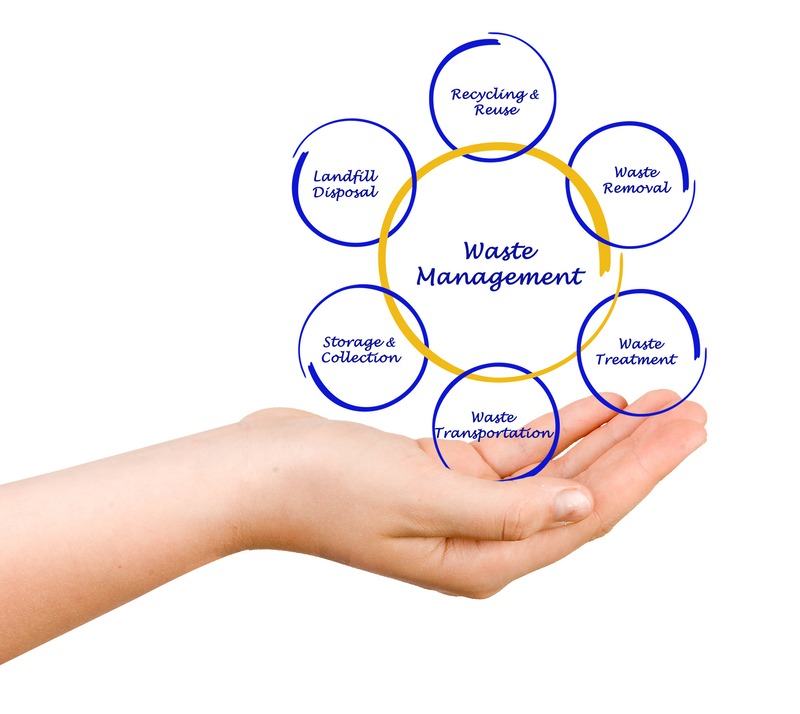Community Solutions for Safe PPE Waste Disposal
The global COVID-19 pandemic has ushered in an unprecedented demand for personal protective equipment (PPE), such as masks, gloves, face shields, and gowns. While these items play a vital role in minimizing infection risks, their improper disposal threatens environmental and public health. Developing community solutions for safe PPE waste disposal is imperative to mitigate pollution, reduce hazards, and promote sustainable practices.

Understanding the PPE Waste Problem
Disposable PPE, once used, becomes a new form of hazardous waste. Most PPE is made from plastics and synthetic fibers, materials that take centuries to decompose and often end up in landfills, waterways, or the ocean. This surge in waste presents several community-level challenges, including:
- Environmental Impact: Widespread littering of masks and gloves results in microplastics that harm wildlife and contaminate soil and water.
- Health Risks: Contaminated PPE can transmit viruses and bacteria to sanitation workers, children, and animals.
- Waste Management Burden: Municipalities face mounting pressure to safely and efficiently dispose of PPE waste, avoiding overloading traditional disposal systems.
Community-driven strategies for safe PPE disposal are crucial in addressing these urgent problems and fostering responsible practices among residents, institutions, and businesses.
Innovative Community-Based Solutions for Safe PPE Disposal
1. Installing Designated PPE Collection Points
One effective approach is the installation of clearly marked PPE disposal bins at strategic locations, such as hospitals, public transport stations, shopping malls, schools, parks, and residential complexes. These dedicated bins promote safe PPE disposal by:
- Reducing contamination risks by separating PPE from general waste.
- Enabling easier handling and processing by sanitation crews.
- Encouraging proper disposal habits in the community.
Best practices include:
- Color-coded bins specifically labeled for masks, gloves, and other PPE.
- Instructional signage explaining correct PPE disposal methods.
- Regular collection and safe transportation by trained personnel.
2. Launching Public Awareness Campaigns
Education is paramount in changing behaviors surrounding PPE waste. Community leaders, local governments, and NGOs can lead public awareness campaigns highlighting:
- The dangers of improper PPE disposal for human health and the environment.
- The necessity of using designated PPE waste bins.
- The importance of personal responsibility and collective action.
Communication tools--such as posters, flyers, digital media, and community workshops--play a key role in reinforcing safe behaviors. Outreach can also include school programs and engagement with local organizations to broaden the message's reach and impact.
3. Organizing Community Clean-Up Drives
Volunteers and local groups can organize regular clean-up events targeting popular public areas, such as parks, beaches, and transportation hubs. These drives serve multiple purposes:
- Physically removing improperly discarded PPE items from the environment.
- Raising community awareness about the magnitude of PPE litter.
- Creating a sense of shared responsibility and civic pride.
Participants should be provided with appropriate protective gloves, masks, and instructions on safely collecting and handling used PPE to minimize risk.
4. Implementing PPE Waste Segregation at Source
The most effective way to manage PPE waste is to separate it at the point of generation. Communities can:
- Educate residents and businesses on the importance of source segregation of PPE waste.
- Supply color-coded bags or containers for easy PPE identification.
- Work with waste collection services to ensure safe transportation to treatment facilities.
Source segregation simplifies downstream processing and significantly reduces the risk of cross-contamination with recyclable or organic waste streams.
5. Supporting PPE Waste Recycling and Repurposing Initiatives
Innovative companies and research organizations are developing methods to recycle PPE waste or repurpose it into useful products. Communities can support these ventures by:
- Partnering with organizations that collect, sanitize, and recycle single-use masks and gloves.
- Promoting the use of PPE take-back programs at pharmacies and stores.
- Encouraging local businesses to adopt recycled PPE materials for non-critical applications, such as construction or road building.
Such solutions not only limit landfill volume but also foster a circular economy--turning waste into valuable resources.
6. Engaging Local Businesses and Institutions
Businesses, offices, shopping centers, and schools are major generators of PPE waste. By collaborating with these entities, communities can:
- Set up on-site PPE waste collection and segregation systems.
- Develop PPE waste management policies tailored to their unique needs.
- Offer training for staff and patrons on safe PPE handling and disposal.
This proactive engagement ensures institutional compliance and sets examples for others.
7. Fostering Collaboration with Waste Management Services
Effective PPE waste management relies on seamless coordination between communities and municipal waste services. This can involve:
- Regular communication with sanitation departments regarding PPE waste trends and challenges.
- Reviewing and updating local waste management protocols to include clear guidelines for PPE collection, transportation, and disposal.
- Investing in training and equipment for waste handlers to safely manage PPE material.
Joint task forces or committees can help bridge the gap between community needs and municipal capabilities.
The Role of Policy and Regulation in Safe PPE Waste Disposal
National and Local Legislation
Governments are increasingly recognizing the threat posed by PPE waste and enacting laws to ensure its safe management. Examples of effective policies include:
- Mandatory segregation and labeling of hazardous waste, including PPE.
- Penalties for illegal dumping or improper handling of PPE materials.
- Funding support for community-led disposal and recycling programs.
Compliance with these regulations is vital, and communities should work to align their PPE waste management strategies with legal requirements.
Guidelines for PPE Waste Transport and Treatment
Proper transportation and treatment of PPE waste require adherence to health and safety standards. Policymakers can facilitate this by:
- Setting standards for PPE waste packaging, such as double-bagging and clear labeling.
- Specifying suitable treatment options, including incineration and sterilization.
- Overseeing regular inspections and compliance monitoring.
Community Incentives and Support
Local authorities can encourage participation in safe PPE waste disposal through incentives such as:
- Providing free PPE waste bags and containers to residents and businesses.
- Acknowledging community groups and volunteers who contribute to clean-up efforts.
- Offering technical support to organizations piloting innovative disposal or recycling approaches.
The Importance of Education and Behavioral Change
Sustainable solutions for PPE waste depend on changing mindsets and habits. Here's how education can make a difference:
- Workshops and Training: Hosting hands-on sessions teaches practical skills for safe PPE waste handling and encourages personal accountability.
- School Engagement: Integrating PPE waste education into school curricula helps cultivate responsible citizens from an early age.
- Media Campaigns: Broadcasting responsible disposal messages through TV, radio, social media, and newspapers extends the reach beyond traditional audiences.
Fostering a community culture of environmental stewardship is central to achieving long-term success in PPE waste management.
Technological Innovations in PPE Waste Disposal
Smart Bin Technology
Some cities are experimenting with smart bins that use sensors and data analytics to monitor fill levels and patterns of PPE waste disposal. These technologies offer several benefits:
- Optimized collection schedules and routes.
- Real-time alerts to prevent overflow and contamination.
- Data-driven insights for resource allocation and policy development.
Advanced Recycling Solutions
Emerging recycling technologies can break down single-use PPE into reusable raw materials. For example:
- Chemical Recycling: Converts plastic fibers from masks and gloves into fuel or new plastic products.
- Mechanical Shredding and Sterilization: Sanitizes and processes PPE into materials for construction, road surfacing, or other industrial applications.
Community support and collection infrastructure are necessary to feed these systems with adequate and uncontaminated PPE waste.
Protecting Frontline Workers and Volunteers
All effective PPE waste disposal solutions must prioritize the health and safety of those handling contaminated items. Recommended safeguards include:
- Providing appropriate PPE and training to waste collectors.
- Implementing strict hygiene protocols, such as hand washing and disinfection after handling PPE waste.
- Ensuring access to vaccination and healthcare services for frontline workers.
Community appreciation and recognition for these essential workers can also bolster morale and promote ongoing safe practices.

Case Studies: Success Stories in PPE Waste Management
India's Mask Recycling Programs
Several Indian cities have pioneered the collection and recycling of face masks and gloves into construction materials like tiles and bricks. This innovation has:
- Diverted tons of PPE from landfills.
- Generated value-added products for local infrastructure.
- Created new jobs in the recycling sector.
UK's Community PPE Drop-Off Initiatives
Across the United Kingdom, neighborhood groups and councils set up community PPE drop-off stations using color-coded bins and frequent public messaging. As a result:
- Littering of masks and gloves in public spaces noticeably decreased.
- Residents became more engaged and informed about correct disposal.
- Partnerships were formed with local recycling companies for further processing.
Conclusion: A Shared Responsibility for a Safer Environment
The challenge of PPE waste is one that demands immediate, coordinated, and innovative action at the community level. Through community-focused solutions for PPE waste disposal, such as establishing dedicated bins, running education campaigns, supporting recycling, and collaborating with local authorities, it is possible to protect public health and the environment simultaneously.
*Each community's circumstances may differ, but the underlying principles--education, collaboration, responsibility, and innovation--remain universal.* By mobilizing residents, institutions, and policymakers around the cause, communities can turn the tide against PPE pollution and foster a safer, healthier future for all.
Let's work together to dispose of PPE waste safely and sustainably--for our health, our environment, and future generations.